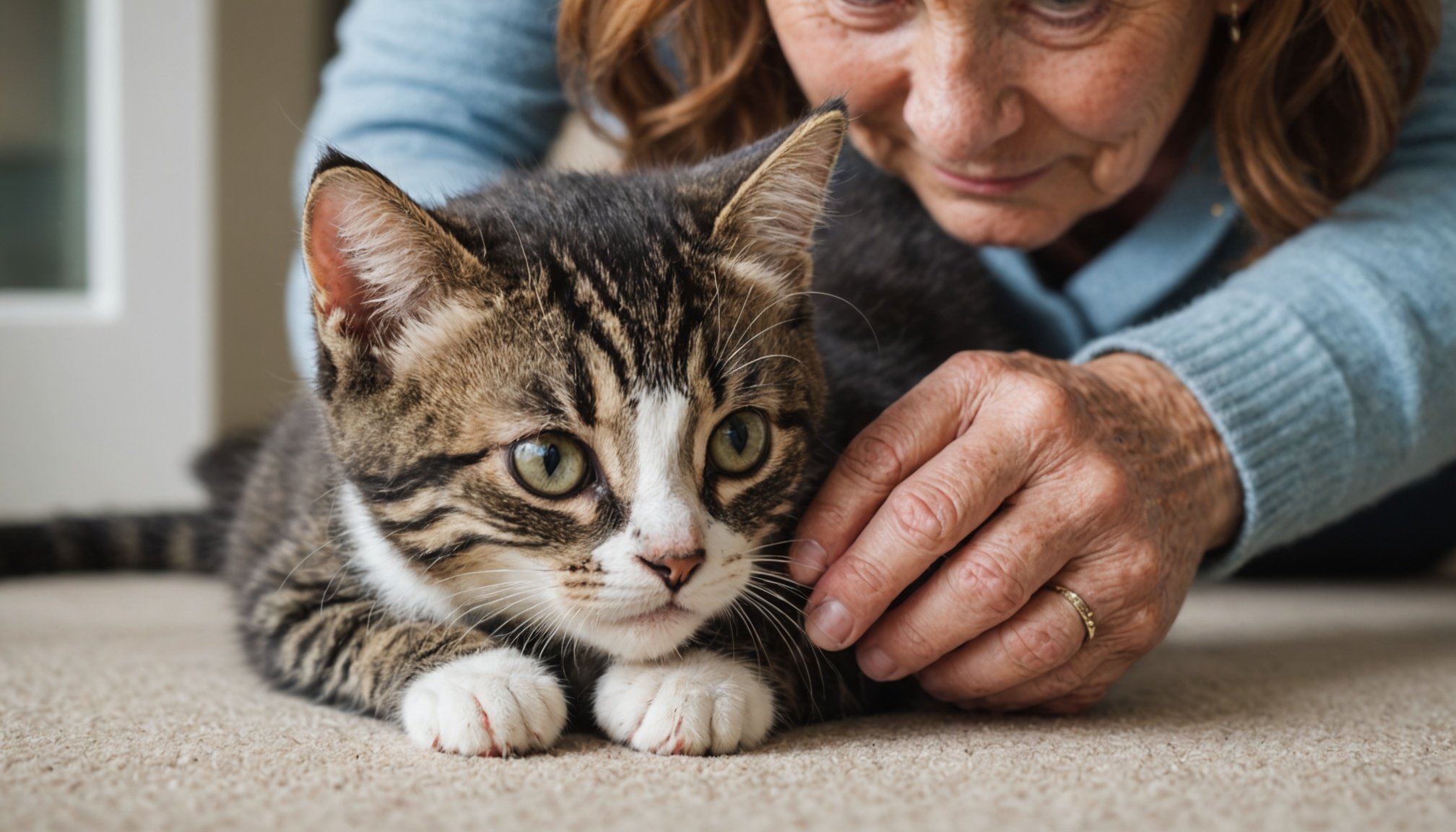Welcoming a new kitten into a home with a senior cat can be a delicate balancing act. Senior cats often value their well-established routines, and sudden changes can lead to stress. Understanding their unique needs is essential for a harmonious introduction. This guide offers expert tips tailored for British households, taking into account cultural nuances and practical solutions. By following these recommendations, you can foster a peaceful coexistence between your two feline companions, ensuring both feel cherished and secure.
Understanding the Dynamics of Introducing a New Kitten
When bringing a new kitten into a home with a senior cat, understanding feline social structures is crucial. Cats are territorial creatures, and their behavior often revolves around establishing and maintaining their territory. A gradual introduction is essential to minimize stress for both the new kitten and the senior cat.
En parallèle : Key Nutrients Your Pregnant Cavalier King Charles Spaniel Needs for a Healthy Pregnancy
Feline Social Structures
Cats are not naturally pack animals, but they can form social bonds.
- Territorial by nature
- Prefer gradual acclimatization
- Sensitive to changes in environment
Importance of Gradual Introduction
Introducing a new kitten too quickly can lead to stress and behavioral issues. To ensure a smooth transition, consider the following steps:
Dans le meme genre : Effective Strategies for Managing Shedding in Siberian Huskies in Warm UK Climates
- Keep the new kitten in a separate room initially
- Allow the senior cat to explore the kitten's scent
- Gradually increase supervised interactions
Recognizing Signs of Stress in Senior Cats
Understanding the signs of stress in a senior cat is vital. Look for changes in behavior such as:
- Increased hiding
- Aggression or withdrawal
- Changes in eating or grooming habits
Recognizing these signs early can help in adjusting the integration process, ensuring a harmonious relationship between your kitten and senior cat. By being observant and patient, you can foster a peaceful coexistence in your home.
Preparing Your Home for a New Kitten
Creating a welcoming environment for your new kitten is essential for their comfort and safety. This process, often referred to as kitten-proofing, involves several key steps to ensure a smooth transition.
Creating a Safe Environment
A kitten-proofed home is a safe haven for your new furry friend. Start by removing or securing items that could pose a threat, such as electrical cords, small objects, and toxic plants. It's important to create a space where your kitten can explore without risk.
- Secure loose cables
- Store small items out of reach
- Remove hazardous plants
Designating Separate Spaces
To facilitate a smooth introduction to your home, designate separate spaces for your kitten and any existing pets. This allows each animal to adjust to the new scents and sounds at their own pace. A separate room for the kitten can serve as their initial territory, helping reduce stress.
Essential Supplies for the Kitten
Equipping your home with the right supplies is crucial for your kitten's well-being. Ensure you have all necessary items to support their needs.
- Litter box and litter
- Food and water bowls
- Scratching post
- Cozy bed
By preparing your home thoughtfully, you can create a nurturing environment that supports your kitten's growth and happiness.
The Step-by-Step Introduction Process
Ensuring a smooth introduction process between your new kitten and senior cat is crucial for a harmonious household.
Careful planning and patience are key.
Establishing a Scent Exchange Routine
Start by facilitating a scent exchange between your pets. Swap bedding or toys between the kitten and senior cat to introduce them to each other's scent. This helps in gradual acclimatization and reduces territorial tension.
Controlled Introductions Through Barriers
Once the scent exchange is underway, proceed with controlled introductions. Use barriers like baby gates or doors to allow visual contact without direct interaction. This method helps both animals adjust to each other's presence while maintaining a sense of security.
- Use baby gates for visual contact
- Allow short, supervised meetings
- Gradually increase interaction time
Rewarding Positive Interactions Between Pets
Encourage and reward positive behavior during the introduction process. Treats and praise can reinforce calm and friendly interactions. This approach fosters a positive association between the kitten and senior cat, promoting a peaceful coexistence.
"Patience and persistence are the keys to successful introductions."
By following these steps, you can facilitate a successful introduction process, ensuring both your new kitten and senior cat feel comfortable and secure in their shared environment.
Managing Behavioral Concerns
Navigating the complexities of introducing a new kitten involves addressing potential behavioral concerns. These include common issues such as aggression or fear, which can arise during this transition phase.
Addressing Aggression or Fear
Aggression or fear in cats may stem from stress or territorial disputes. To manage these behavioral concerns, observe the interactions closely. If your senior cat exhibits aggression, separate the animals and reintroduce them more slowly. Providing each cat with their own space can reduce territorial tension.
- Common issues include hissing and swatting
- Ensure each cat has a personal retreat
- Use pheromone diffusers to calm anxiety
Providing Enrichment Activities
Enrichment activities can help alleviate stress and encourage positive behavior. Interactive toys and puzzles keep your cats engaged, reducing the likelihood of aggression. Regular playtime with each cat separately can also foster a sense of security and well-being.
Monitoring Interactions and Adjusting Approaches
Continuously monitor the interactions between your kitten and senior cat. Adjust your approach based on their behavior. If stress levels remain high, consider consulting a veterinary behaviorist. Patience and adaptability are key to successfully managing behavioral adjustments.
"Understanding and addressing common issues early can lead to a peaceful coexistence."
By focusing on these strategies, you can effectively manage behavioral concerns and promote harmony in your multi-cat household.
Safety Measures and Health Considerations
Ensuring the safety and health of both your new kitten and senior cat is paramount during their introduction.
Scheduling Veterinary Check-Ups
Regular veterinary check-ups are essential for maintaining the well-being of your pets. Schedule appointments for both the kitten and the senior cat to address any underlying health issues and ensure they are in optimal condition. These check-ups allow for early detection of potential problems, aiding in prompt treatment.
Importance of Vaccinations for Kittens
Vaccinations play a critical role in safeguarding your kitten's health. They protect against common feline diseases and help prevent the spread of infections. Ensure your kitten receives all recommended vaccinations, including those for feline distemper, herpesvirus, and calicivirus. Consult your veterinarian for a tailored vaccination schedule.
Tips for Managing Health Concerns in Senior Cats
Senior cats require special attention to their health. Monitor them for signs of age-related issues such as arthritis or dental problems. Regular health checks can identify these concerns early, allowing for effective management. Consider using supplements or specialized diets to support their health.
- Conduct regular health checks
- Consult with a veterinarian
- Use supplements for joint health
By prioritizing health considerations and implementing these safety measures, you can ensure a harmonious and healthy environment for your pets.
Resources for British Pet Owners
Navigating the world of pet ownership in the UK can be a rewarding journey with the right resources at your disposal.
Finding a Local Veterinarian
Identifying a local veterinarian is crucial for your pet's health. Begin by consulting the Royal College of Veterinary Surgeons (RCVS) to find accredited veterinarians near you. It's beneficial to visit potential clinics to assess their facilities and services. A trusted veterinarian can provide essential care and guidance, ensuring your pet's well-being.
- Check RCVS for accredited options
- Visit clinics to evaluate services
- Establish a relationship with a trusted veterinarian
Pet Care Services in the UK
The UK offers a plethora of pet services ranging from grooming to boarding. Research local pet services to find those that best suit your needs. Consider seeking recommendations from fellow pet owners or online reviews to ensure quality care. Reliable pet services can enhance your pet's quality of life.
- Grooming and boarding options
- Seek recommendations
- Prioritize quality and reliability
Online Communities for Pet Owners
Joining online communities can provide valuable support and advice. Platforms such as Facebook groups or forums connect you with fellow pet enthusiasts. Engaging with these communities offers insights into local pet services and veterinarian recommendations, fostering a sense of camaraderie among pet owners.
"The collective wisdom of a community is a powerful tool for any pet owner."











